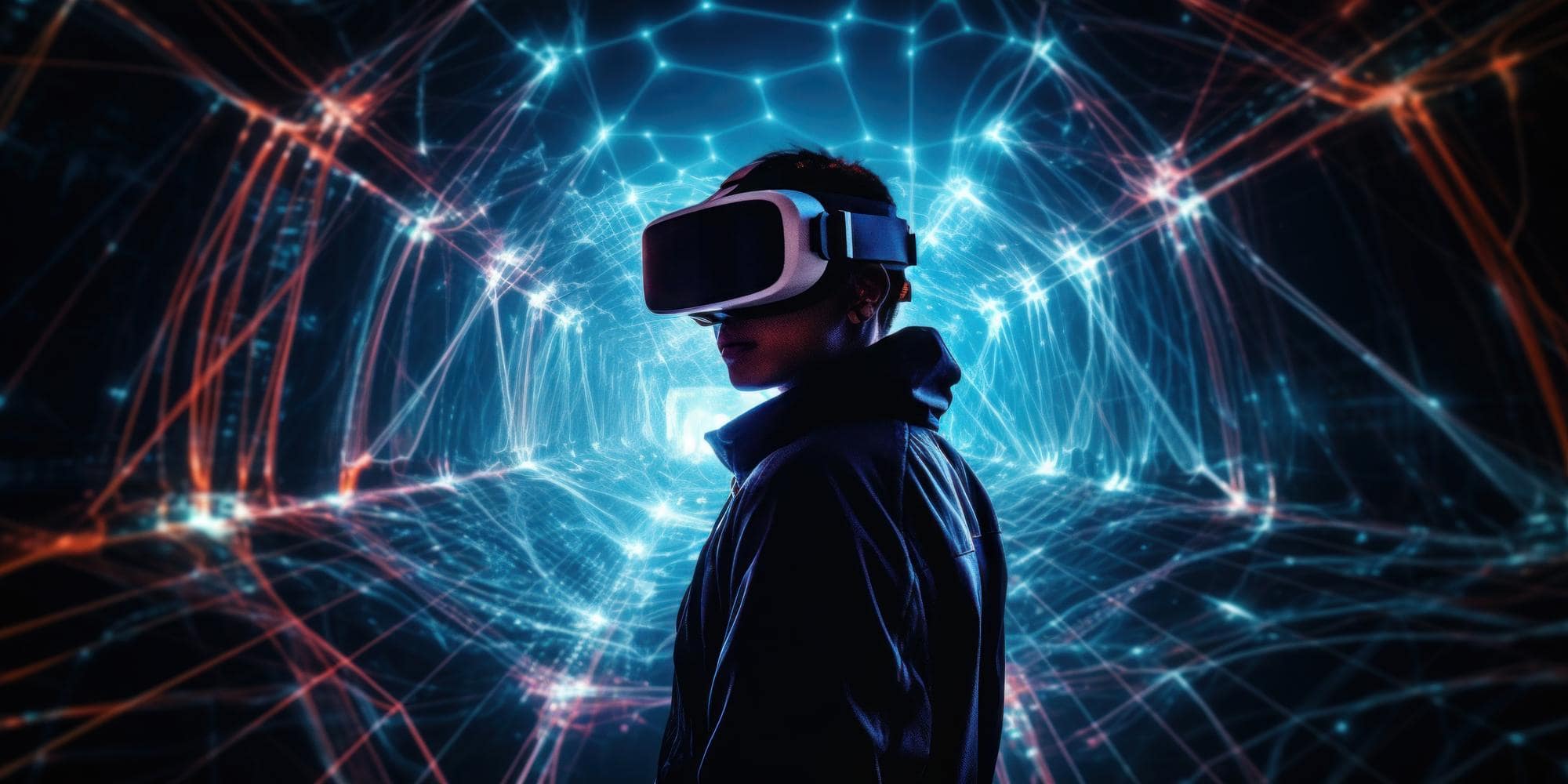
Augmented Reality (AR): Transforming the Way We See the World
Augmented Reality (AR) has become more than just a buzzword; it’s a transformative technology that is reshaping our perception of the world around us. From enhancing gaming experiences to revolutionizing education and healthcare, AR is making waves across various industries. In this article, we’ll delve into the intricacies of AR, exploring its applications, benefits, challenges, and future trends.
Introduction to Augmented Reality (AR)
Definition and Brief History
Augmented Reality, often abbreviated as AR, refers to the integration of digital information with the user’s environment in real time. The concept of AR has been around for decades, with its roots traced back to the 1960s. However, it’s in recent years that AR has gained significant traction, thanks to advancements in technology.
Evolution of AR Technology
The evolution of AR has been marked by leaps in hardware capabilities, improved software algorithms, and the widespread adoption of smartphones. Today, AR is not just limited to a niche market; it’s a mainstream technology that continues to evolve rapidly.
How Augmented Reality Works
Understanding how AR works is fundamental to appreciating its potential. At its core, AR overlays digital information onto the physical world. This is achieved through the use of cameras, sensors, and displays on devices such as smartphones, tablets, and AR glasses.
Explanation of AR Technology
AR employs a combination of hardware and software components to identify and track real-world objects. This allows digital content to be seamlessly integrated into the user’s view, creating an augmented experience.
Integration with Devices and Applications
The ubiquity of smartphones has played a pivotal role in the widespread adoption of AR. Additionally, AR is integrated into various applications, from gaming and education to healthcare and marketing.
Applications of Augmented Reality
AR in Gaming
Gaming has been a trailblazer in the adoption of AR. Popular games use AR to superimpose virtual elements onto the real world, creating immersive and interactive gaming experiences.
AR in Education
In the realm of education, AR is a game-changer. It brings textbooks to life, allowing students to visualize complex concepts in 3D and participate in interactive learning experiences.
AR in Healthcare
The healthcare industry benefits from AR in surgical planning, medical training simulations, and even patient care. AR enhances precision and accuracy in medical procedures.
AR in Marketing
Marketing strategies have evolved with the integration of AR. Brands use AR to create engaging and interactive campaigns, allowing consumers to experience products virtually before making a purchase.
Benefits of Augmented Reality
Enhancing User Experience
AR enhances user experiences by providing a dynamic and interactive interface. Whether in gaming, education, or retail, AR adds an extra layer of engagement.
Improving Learning Outcomes
In education, AR promotes better understanding through visualization and hands-on experiences. Students grasp complex subjects more effectively when immersed in interactive AR lessons.
Facilitating Remote Collaboration
AR bridges geographical gaps by facilitating remote collaboration. Teams can collaborate in a virtual space, enhancing productivity and efficiency.
Boosting Sales and Brand Engagement
In the business world, AR is a powerful tool for boosting sales and brand engagement. Virtual try-ons, interactive product demonstrations, and AR-powered marketing campaigns leave a lasting impression on consumers.
Challenges and Limitations
Technical Challenges
Despite its advancements, AR faces technical challenges such as hardware limitations and the need for robust tracking and recognition systems.
Privacy Concerns
The seamless integration of digital and physical worlds raises concerns about privacy. Striking a balance between personalized experiences and user privacy is a challenge that AR developers must navigate.
Adoption Barriers
Widespread adoption of AR faces hurdles such as cost, user familiarity, and the need for compelling content. Overcoming these barriers is crucial for the continued growth of AR technology.
Future Trends in Augmented Reality
Advancements in AR Hardware
As technology evolves, we can expect more sophisticated AR hardware, including lightweight AR glasses with advanced features and improved user interfaces.
Emerging AR Applications
New and innovative applications of AR continue to emerge, from enhanced navigation systems to AR-enhanced shopping experiences.
Integration with Artificial Intelligence
The synergy between AR and artificial intelligence is a promising trend. AI algorithms will enhance AR experiences by providing more contextually relevant and personalized information.
Case Studies
Successful AR Implementations
Examining case studies of successful AR implementations across industries provides insights into the tangible benefits and impact of this technology.
Impact on Industries
AR is disrupting traditional practices in various industries, from manufacturing and retail to healthcare and entertainment.
Augmented Reality vs. Virtual Reality
Key Differences
While AR and Virtual Reality (VR) share similarities, they differ in crucial aspects. AR overlays digital content onto the real world, whereas VR immerses users in a completely virtual environment.
Comparative Advantages
Understanding the strengths and weaknesses of AR and VR helps businesses and consumers choose the right technology for their needs.
AR in Everyday Life
AR in Navigation
Navigation apps leverage AR to provide real-time directions, making it easier for users to navigate unfamiliar surroundings.
AR in Shopping
Retailers use AR to enable virtual try-ons, allowing customers to visualize products in real-world settings before making a purchase.
AR in Social Media
AR filters and effects on social media platforms add a fun and interactive dimension to users’ online experiences.
The Role of Augmented Reality in Business
Improving Customer Engagement
Businesses use AR to engage customers in innovative ways, creating memorable experiences that foster brand loyalty.
Enhancing Employee Training
AR is transforming employee training by providing realistic simulations and hands-on learning experiences.
Boosting Productivity
Incorporating AR into business processes enhances efficiency and productivity, from design and manufacturing to customer service.
Augmented Reality and the Future of Retail
AR in the Retail Experience
The retail landscape is evolving with the integration of AR, offering customers personalized and immersive shopping experiences.
Benefits for Both Consumers and Retailers
AR benefits consumers by providing a more informed and enjoyable shopping experience, while retailers gain valuable insights into consumer preferences.
Educational Implications of Augmented Reality
AR in Classrooms
AR transforms traditional classrooms into interactive learning spaces, catering to diverse learning styles and fostering student engagement.
Interactive Learning Experiences
Students can explore historical events, scientific concepts, and more through interactive AR experiences, making learning both educational and enjoyable.
Healthcare Innovations with Augmented Reality
Surgical Applications
AR assists surgeons with real-time information during procedures, improving precision and reducing the risk of errors.
Training Simulations
Medical professionals benefit from AR simulations that replicate real-world scenarios, enhancing their skills and decision-making abilities.
Patient Care Improvements
AR contributes to better patient care through technologies like AR-assisted diagnostics and treatment planning.
Legal and Ethical Considerations in Augmented Reality
Privacy Laws and Regulations
As AR becomes more integrated into daily life, legal frameworks must address privacy concerns to ensure responsible use of this technology.
Ethical Use of AR Technology
Ensuring the ethical use of AR technology involves considering the impact on individuals and society, from data privacy to the potential misuse of augmented experiences.
Conclusion
In conclusion, Augmented Reality is not just a technological marvel; it’s a catalyst for change across various sectors. From revolutionizing education to enhancing healthcare, AR’s impact is profound. As technology continues to advance, we can expect even more innovative applications and a deeper integration of AR into our daily lives.

